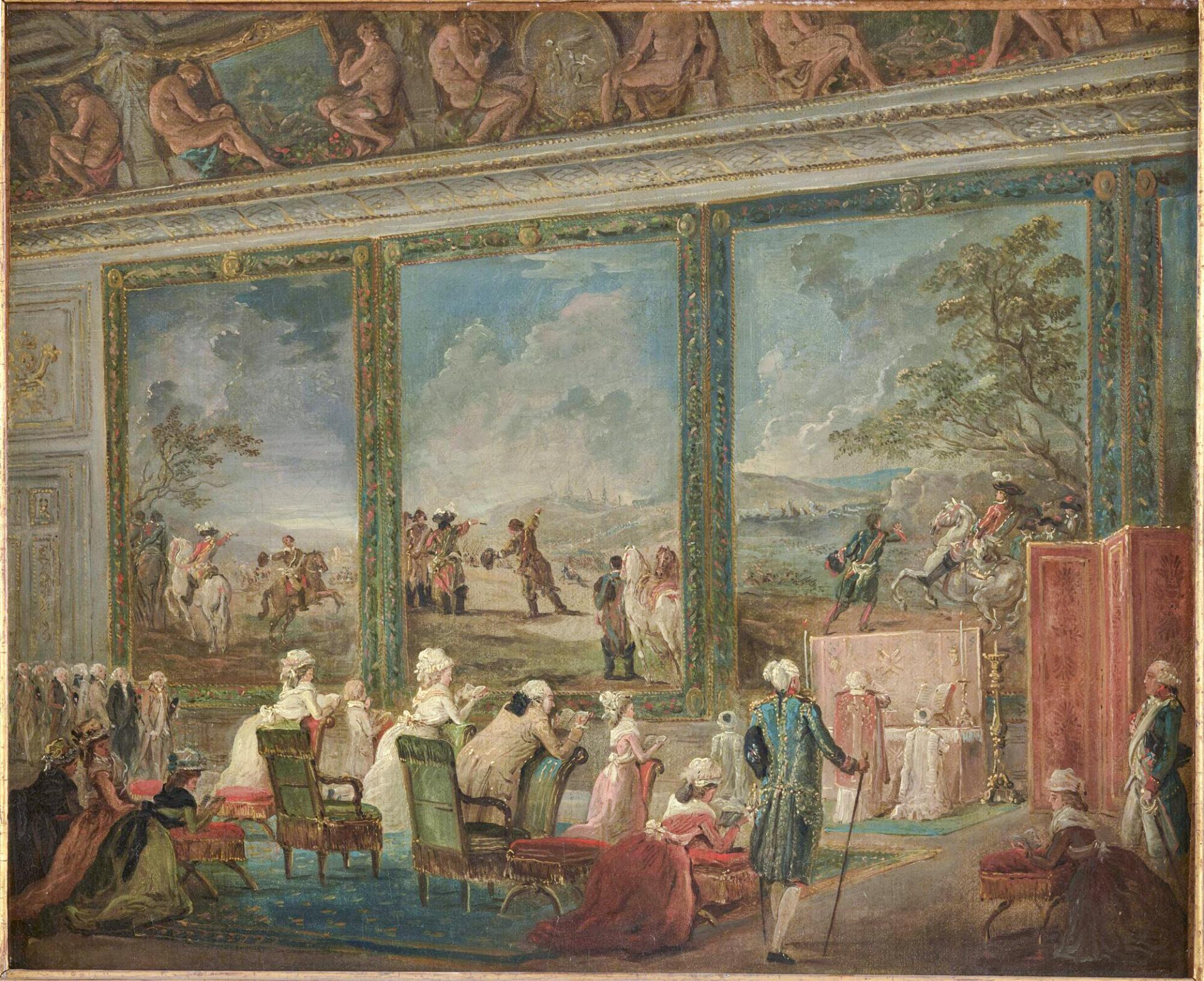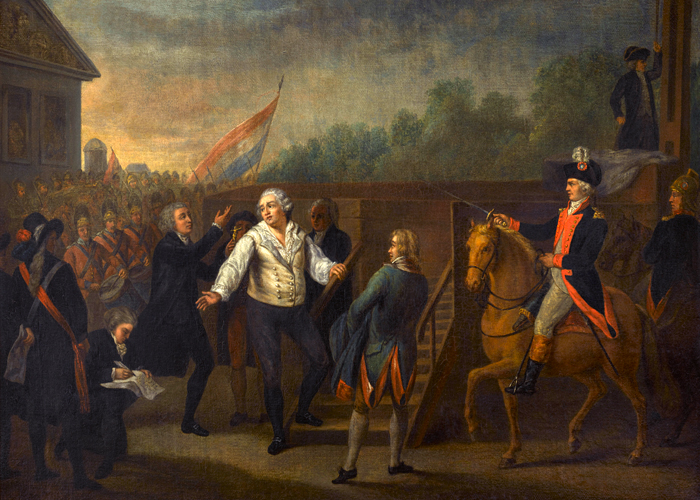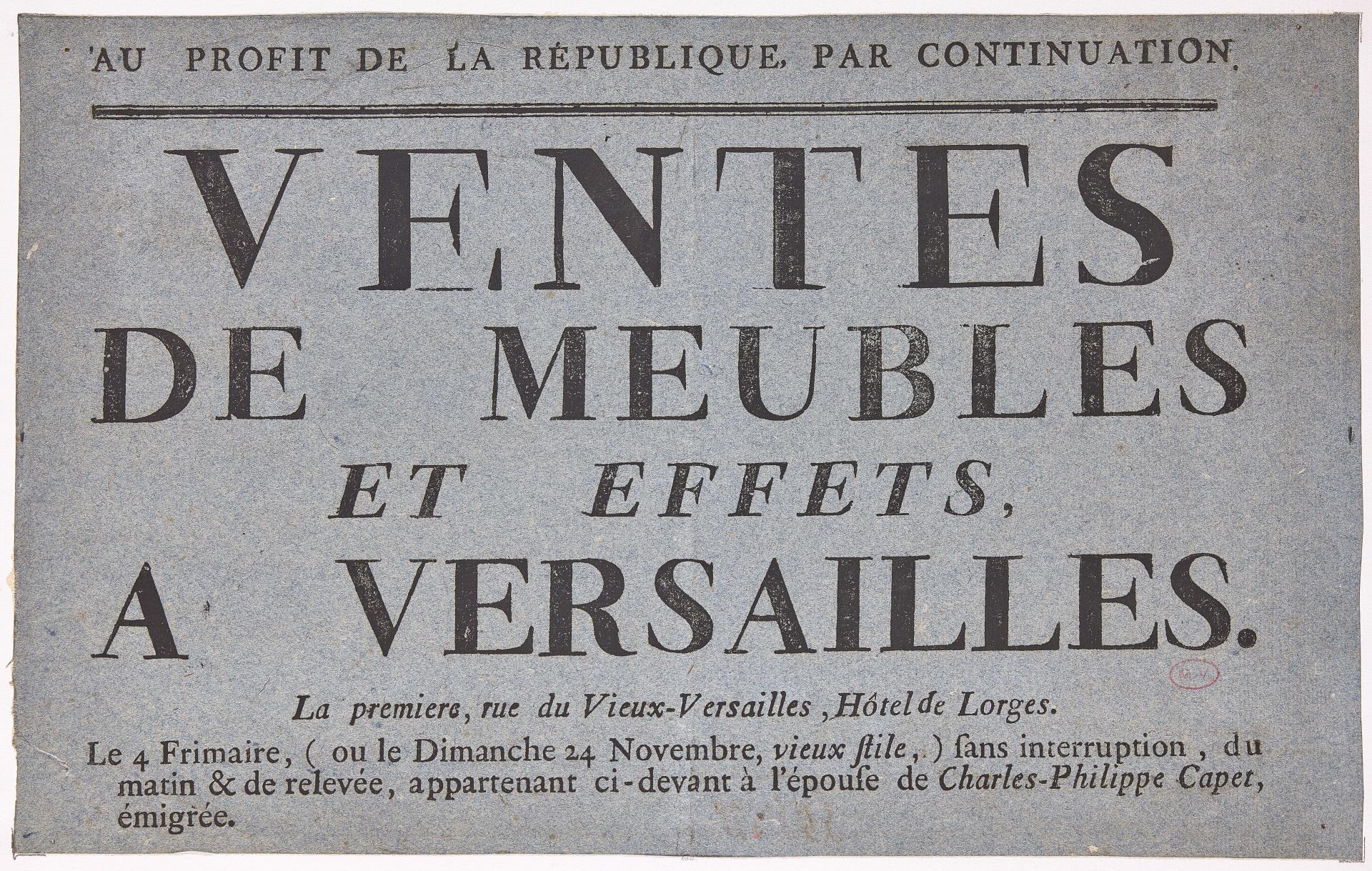The French Revolution was a turning point in the history of both France and the Palace of Versailles.
The main royal residence since 1682 and the reign of Louis XIV, the Palace was abandoned by the royal family in 1789.

Versailles after the French Revolution 1793-1799
After the departure of the royal family

The Royal Family Mass at the Tuileries
© EPV / Christophe Fouin
The royal family left the Palace of Versailles on 6 October 1789 for the Tuileries Palace in Paris, but many expected they would swiftly return. Even though the sovereign and the court were no longer in residence, the Palace was not left to go to ruin. On the contrary, and as always during the royal family’s absences, the opportunity was taken to carry out repairs. Scaffolding was erected in the Hall of Mirrors, in preparation for restoration work on the paintings on the vaulted ceiling. From Paris, Louis XVI ordered the Grand Canal to be cleaned, as it tended to silt up.
But time marched on, and the news from Paris did not suggest that Louis XVI and the royal family would be returning to Versailles. On 21 January 1793, King Louis XVI was guillotined in Paris, on Place de la Révolution, formerly Place Louis XV and now known as Place de la Concorde.

Louis XVI at the foot of the scaffold, 21 January 1793, Charles Benazech
© RMN-Grand Palais (Château de Versailles) / Gérard Blot
On 8 July 1793, the Palace was declared a public establishment by the Convention.
Anecdote
In 1794, it was decreed that “the buildings and gardens of Saint-Cloud, Bellevue, Monceaux, le Raincy, Versailles (…) will not be sold but preserved and maintained at the expense of the Republic for the pleasure and enjoyment of the people and to serve as useful establishments for agriculture and the arts”.
While there may once have been a question of destroying the Palace of Versailles, many more voices were raised in its defence, so that it might accommodate new institutions. Consequently, great care was taken to remove all traces of the fallen monarchy: the fleurs-de-lys, crowns, sceptres, double Ls (Louis XIV’s monogram), etc. – every symbol of the monarchy disappeared from the Palace.
Anecdote
A report written in 1794 by one of the estate inspectors condemned the deplorable state of the Palace: “Such is the scale of pillage and dirtiness that it cannot possibly go on. (…) today, there are doors whose locks have been removed, tomorrow it will be glass panes stolen from the corridors (…)”.
The fate of the gardens was also discussed. The estate of Trianon was saved at the last minute from the threat of demolition thanks to the establishment of vegetable and orchard cultivation there. The Grand Canal was drained and the trees cut down for firewood. The thefts and deterioration of the pipework were condemned. By the end of the Revolution, not a single fountain was working. Versailles had become a forlorn place.
The revolutionary sales
The royal family’s hasty departure in 1789 meant the Palace retained all its furniture, apart from a few items and utensils required to set the family up at Tuileries. Paris, and the Louvre, in particular, gained the paintings and other artworks.
Anecdote
The only item to avoid being sold during the revolutionary sales was the King’s desk made by Œben and Riesener, which was transferred to Paris. The piece was already considered a work of art at the time.
After the fall of the monarchy in 1792, the Convention set about distributing the contents of the huge furniture depository across various locations. The decree of 10 January 1793 stipulated that “for the lavish furniture of the last tyrants of France (…), a general inventory will be made for the sale of the current items of furniture estimated to be worth less than a thousand livres”.

Revolutionary poster: sales of furniture and effects at Versailles
© Château de Versailles, Dist. RMN / © Christophe Fouin
The sales duly took place in the former apartment of the Princess of Lamballe. Dealers, former purveyors to the Crown and cabinetmakers jostled for position in their attempts to buy back the former items of the royal family. The tomes from the royal libraries were used to stock the new public libraries. Over the course of a few days towards the end of the summer of 1793, the Palace was completely cleared, as more than 17,000 lots disappeared.
Anecdote
During the revolutionary sales, the remaining animals in the King’s Menagerie were transferred to the new Natural History Museum!
From 1793, the plan was to create a national Versailles museum at the Palace, based on the Louvre museum.
And then?
In 1799, Napoleon Bonaparte became First Consul, by virtue of the Coup of Brumaire (November 1799).
Under his leadership, Versailles, which had survived the destruction wrought by the Revolution, was reborn as an extension of the Invalides. Napoleon got on with restoring the fountains and the gardens, and, in 1801, the official relaunch of the Fountains Shows was announced. Having become Emperor of the French, Napoleon I dreamed at one point of moving into the Palace, to be surrounded by his new court. For the moment, he concentrated on the estate of Trianon, to which he wanted to move his mother and sister. But the Empire fell in 1814, taking with it the final hope of seeing Versailles become, once again, the residence of the sovereigns of France…
Discover Napoleon at Versailles




